
February 26
1885 Conference of Berlin: While eating pickled herrings with both hands, Count Otto von Bismarck presides over the division of Africa by the colonial powers. Congo goes to Belgium and Nigeria goes to England. "The Scramble for Africa sped up after the Conference. Within a few years, Africa was at least nominally divided up south of the Sahara. By 1895, only the settlements in Liberia, Orange Free State and Transvaal remained independent. Abyssinia was able to break free of Italian domination in 1896, becoming the only free native state."
1915 World War I: Flame-throwers are used in battle for the first time (by the 3rd Guard German pioneer regiment against the French at Malancourt, Argonnen):
The flamethrower was invented in 1901 by German engineer Richard Fiedler. He tested these devices in the 1908 Engineer Test Company, and equipped two special German Army battalions of former Leipzig firefighter Capt. Hermann Redemann in late 1914. They were first used in combat against the French trenches at Malancourt, north of Verdun.
1916 World War I: Russian troops conquer Kermanshah, Persia:
The sole engagement fought by the Russian Army on the Mesopotamian Front‑-the Battle of Khanaqin‑-saw a division under the command of Russian General Baratov cross the Mesopotamian border from Western Persia, to attack Turkish forces stationed at the border town of Khanaqin. Baratov's force had been involved in a lengthy campaign.
1917 World War I: Various: War at Sea:
In 1912, when Roosevelt reentered politics as head of his Bull Moose Party, La Follette lost much of his support by bitterly attacking Roosevelt and then endorsing Democratic candidate Woodrow Wilson, who won the presidency. La Follette lost more support during the next several years by stridently opposing U.S. entry into World War I, contrary to the enthusiasm for this war exhibited by Roosevelt. As a Senator La Follette in 1917 led a filibuster to prevent the arming of U.S. ships, and he voted against the congressional declaration of a war he said the U.S. was entering to protect the investments of bankers and businessmen.
French Report into German Conduct during the Hindenburg Line Retreat:
On February 26th and 27th, two soldiers, accompanied by two officers, came and opened the safes of the Societe Generale by means of a blow-pipe, and carried off the contents.The same operation was carried out at Cheneau and Barbier's Bank and at Briere's Bank.The ledgers of each establishment were seized at the same time as the valuables. When M. Briere expressed astonishment that even his archives should be taken from him, and pointed out that they could be of no use to anyone but himself, the officer whom he had addressed, and who gave himself out to be the emissary of the Berlin Treasury, merely replied: "My orders were to empty the safes, and I am emptying them."
President Wilson learns of Zimmermann Telegram: In a crucial step toward U.S. entry into World War I, President Woodrow Wilson learns of the so-called Zimmermann Telegram, a message from German Foreign Secretary Arthur Zimmermann to the German ambassador to Mexico proposing a Mexican-German alliance in the event of a war between the U.S. and Germany.
On February 24, 1917, British authorities gave Walter Hines Page, the U.S. ambassador to Britain, a copy of the Zimmermann Telegram, a coded message from Zimmermann to Count Johann von Bernstorff, the German ambassador to Mexico. In the telegram, intercepted and deciphered by British intelligence in late January, Zimmermann instructed his ambassador, in the event of a German war with the United States, to offer significant financial aid to Mexico if it agreed to enter the conflict as a German ally. Germany also promised to restore to Mexico the lost territories of Texas, New Mexico and Arizona.
The State Department promptly sent a copy of the Zimmermann Telegram to President Wilson, who was shocked by the note's content and the next day proposed to Congress that the U.S. should start arming its ships against possible German attacks. Wilson also authorized the State Department to publish the telegram; it appeared on the front pages of American newspapers on March 1. Many Americans were horrified and declared the note a forgery; two days later, however, Zimmermann himself announced that it was genuine.
The Zimmermann Telegram helped turn the U.S. public, already angered by repeated German attacks on U.S. ships, firmly against Germany. On April 2, President Wilson, who had initially sought a peaceful resolution to World War I, urged immediate U.S. entrance into the war. Four days later, Congress formally declared war against Germany. (History.com)
1919 Weimar: Rudolf Hess returns to Munich, depressed and embittered at the 'treason' of the government in Berlin, and soon begins running errands for Baron Rudolf von Sebottendorf's secretive anti-Marxist, anti-Semitic Thule Society. (THP)
1924 Weimar: Munich Putsch:The trial of Adolf Hitler, Ludendorff, and a number of other participants in the Munich Putsch begins in Munich. From Hitler's opening statement:
By Marxism, I understand a doctrine which, in principle, rejects the idea of the worth of personality, which replaces individual energy by the masses, and thereby works the destruction of our whole cultural life. This movement has utilized monstrously effective methods and exercised tremendous influence on the masses, which in the course of three or four decades could have no other result than that the individual has become his own brother's foe, while at the same time calling a Frenchman, an Englishman, or a Zulu his brother. This movement is distinguished by incredible terror, which is based on a knowledge of mass psychology.
1932 Volkishness: Jorg Lanz von Liebenfels writes a letter to a member of the (ONT) Order of the New Templars stating "Hitler is one of our pupils . . . you will one day experience that he‑-and through him‑-we, will one day be victorious and develop a movement that makes the world tremble." (THP)
1933 Various: Albert Einstein, lecturing in California at the time of Hitler's appointment as Chancellor, decides to take up residence in America. From this time until his death in 1955, he will hold an analogous research position at the Institute for Advanced Study in Princeton, N.J. (THP)
Prophecy: Eric Hanussen predicts during a seance in Berlin, that a great fire will soon strike a large building in the Capital. An eagle, he declares, will rise from the smoke and flames. Note: Hanussen had previously predicted Hitler's rise to power. 1935 Various: Nazi Germany: Hitler organizes the Luftwaffe:
On February 26, 1935, Nazi leader Adolf Hitler signs a secret decree authorizing the founding of the Reich Luftwaffe as a third German military service to join the Reich army and navy. In the same decree, Hitler appointed Hermann Goering, a German air hero from World War I and high-ranking Nazi, as commander in chief of the new German air force.
The Versailles Treaty that ended World War I prohibited military aviation in Germany, but a German civilian airline—Lufthansa—was founded in 1926 and provided flight training for the men who would later become Luftwaffe pilots. After coming to power in 1933, Nazi leader Adolf Hitler began to secretly develop a state-of-the-art military air force and appointed Goering as German air minister. (During World War I, Goering commanded the celebrated air squadron in which the great German ace Manfred von Richthofen—"The Red Baron"—served.) In February 1935, Hitler formally organized the Luftwaffe as a major step in his program of German rearmament.
The Luftwaffe was to be uncamouflaged step-by-step so as not to alarm foreign governments, and the size and composition of Luftwaffe units were to remain secret as before. However, in March 1935, Britain announced it was strengthening its Royal Air Force (RAF), and Hitler, not to be outdone, revealed his Luftwaffe, which was rapidly growing into a formidable air force.
As German rearmament moved forward at an alarming rate, Britain and France protested but failed to keep up with German war production. The German air fleet grew dramatically, and the new German fighter—the Me-109—was far more sophisticated than its counterparts in Britain, France, or Russia. The Me-109 was bloodied during the Spanish Civil War; Luftwaffe pilots received combat training as they tried out new aerial attack formations on Spanish towns such as Guernica, which suffered more than 1,000 killed during a brutal bombing by the Luftwaffe in April 1937.
The Luftwaffe was configured to serve as a crucial part of the German blitzkrieg, or "lightning war"—the deadly military strategy developed by General Heinz Guderian. As German panzer divisions burst deep into enemy territory, lethal Luftwaffe dive-bombers would decimate the enemy's supply and communication lines and cause panic. By the outbreak of World War II in September 1939, the Luftwaffe had an operational force of 1,000 fighters and 1,050 bombers.
First Poland and then Denmark, Norway, Holland, Belgium, and France fell to the blitzkrieg. After the surrender of France, Germany turned the Luftwaffe against Britain, hoping to destroy the RAF in preparation for a proposed German landing. However, in the epic air battle known as the Battle of Britain, the outnumbered RAF fliers successfully resisted the Luftwaffe, relying on radar technology, their new, highly maneuverable Spitfire aircraft, bravery, and luck. For every British plane shot down, two German warplanes were destroyed. In the face of British resistance, Hitler changed strategy in the Battle of Britain, abandoning his invasion plans and attempting to bomb London into submission. However, in this campaign, the Luftwaffe was hampered by its lack of strategic, long-range bombers, and in early 1941 the Battle of Britain ended in failure.
Britain had handed the Luftwaffe its first defeat. Later that year, Hitler ordered an invasion of the USSR, which after initial triumphs turned into an unqualified disaster. As Hitler stubbornly fought to overcome Russia's bitter resistance, the depleted Luftwaffe steadily lost air superiority over Europe in the face of increasing British and American air attacks. By the time of the D-Day invasion of Normandy in June 1944, the Luftwaffe air fleet was a skeleton of its former self. (History.com) RADAR (Radio Detection and Ranging Device): In Daventry, Robert Watson-Watt gives the first demonstration of his war-winning device.
1936 Various: 1939 Various: Palestine: Death: Three 'New Bolsheviks': On this date in 1939, three of "New Bolsheviks" recently flying high after helping purge the Old Bolsheviks had their own reversals of fate culminate with a bullet to the head.
Stanislav Kosior (or Kossior), a Pole who ran the Ukrainian Communist Party for much of the 1930s, and Vlas Chubar, a Ukrainian politburo member who had once served as Prime Minister, were shot this day along with Pavel Postyshev, once Stalin's personal representative to the Ukraine.
Though these obviously died because of parochial party politics under the terrifying reign of Stalin‑-and all were accordingly rehabilitated after Stalin's death‑-posterity has another bone to pick with them: the Ukrainian famine known as the Holodomor. Their portfolios included carrying out the forced collectivization to which the famine is generally attributed. Participation was strongly encouraged . . . . It was a grim time: starving peasnts dared not touch collectivized foodstuffs slated for use elsewhere on pain of execution themselves. (Kosior won the Order of Lenin for his achievements in agriculture.) These Soviet VIPs themselves faced very similar pressure to implement Moscow policy and party line with exactitude . . . and very similar consequences for any perceived failure.
1940 World War II: Various: US Air Defense Command is established at Mitchell Field, Long Island, New York.
German Foreign Office Memorandum:
The Agreement is based on the correspondence-mentioned in the preamble-between the Reich Minister for Foreign Affairs and the Chairman of the Council of People's Commissars, Molotov, dated September 28, 1939. The Agreement represents the first great step toward the economic program envisaged by both sides and is to be followed by others. 1. The Agreement covers a period of 27 months, i. e., the Soviet deliveries, which are to be made within 18 months, will be compensated by German deliveries in turn within 27 months. The most difficult point of the correspondence of September 28, 1939, namely, that the Soviet raw material deliveries are to be compensated by German industrial deliveries over a longer period, is thereby settled in accordance with our wishes. This was not possible without a hard fight.
Press Reaction to Hitler's Feb 24 Speech:
The most interesting passages in regard to the development and the outcome of the war are those which concern the alliance with Italy, submarine warfare, and the new phase of the struggle. His attitude on Italo-German cooperation is identical with that of Il Duce. The Chancellor pointed to the solidarity of the German people, the army, the Party and the State. He left this subject to point out that there lies before the Reich a new year which must bring grave decisions. This obviously means that the heavy fighting which has been threatened for weeks and months past can no longer be delayed. What form will it take? We can be sure that Chancellor Hitler took care not to furnish details on the matter, since the element of surprise is one of the chief factors in any large-scale military or naval venture."—Le Temps (Edition de Lyon)
1942 World War II: War at Sea: Various: Gneisenau: Sighted Sub, Sank Same: Famous message sent by Navy flier Don Mason.
Wunderwaffen: Werner Heisenberger informs the Nazis about the German nuclear energy project
An endeavor by scientists during World War II in Nazi Germany to develop nuclear energy and an atomic bomb for practical use. Unlike the competing Allied effort to develop a nuclear weapon the German effort resulted in two rival teams, one working for the military, the second, a civilian effort co-ordinated by the German Post Office. The nuclear research effort most widely discussed was that of the Kaiser Wilhelm Institute team led by the physicist Werner Heisenberg. The second was a military team under the scientific leadership of Prof. Kurt Diebner. This military team was also associated with Dr. Paul Harteck who helped to develop the gaseous uranium centrifuge invented by Dr. Erich Bagge in 1942. Their team was part of the German Army (Heereswaffenamt Forschungsstelle E), the Kriegsmarine (navy) had a subsidiary team looking at nuclear propulsion for U-boats under Dr. Otto Haxel. Konteradmiral Karl Witzell and Konteradmiral Wilhelm Rein were military leaders of the naval nuclear project. The intentions of Heisenberg's team are a matter of historical controversy, centering on whether or not the scientists involved were genuinely attempting to build an atomic bomb for Nazi dictator Adolf Hitler. The project was not a military success by any measure. [See: Where Would We Be Without Hitler's Scientists?]
1944 World War II: Stalin to FDR and Churchill:
My thanks to you and the Prime Minister for the news about the temporary transfer to the Soviet Union of eight destroyers and four submarines, as well as a battleship and 20,000 tons of merchant shipping by Great Britain and a cruiser and 20,000 tons of merchant shipping by the United States. Mr. Kerr has expressly warned us that all the destroyers are old ones so I have misgivings about their combat qualities. It seems to me that British and US Navies should find no difficulty in assigning, out of eight destroyers, at least four modern, not old, ones. I still hope that you and the Prime Minister will find it possible to transfer at least four modern destroyers. As a result of military operations by Germany and Italy we have lost a substantial part of our destroyers. It is, therefore, very important for us to have that loss repaired at least in part.
1945 Various: War in the Air: Berlin is subjected to very heavy bombing:
Judged by the standards of our attacks on Hamburg, the Battle of Berlin did not appear to be an overwhelming success. With many times as many sorties, a far greater bomb load, and ten times as many casualties, we appeared to have succeeded in destroying about a third of the acreage destroyed in the attack on Hamburg; the actual figure, as far as it could then be estimated from air photographs, was 2180 acres over and above the 500 or so acres destroyed before the main Battle of Berlin began. But by comparison with the results of all earlier attacks on Berlin it was a devastating blow. [See: The Last Days of the Third Reich.]
Corregidor's last gasp:
On this day, an ammunition dump on the Philippine island of Corregidor is blown up by a remnant of the Japanese garrison, causing more American casualties on the eve of U.S. victory there.
In May 1942, Corregidor, a small rock island at the mouth of Manila Bay, remained one of the last Allied strongholds in the Philippines after the Japanese victory at Bataan. Constant artillery shelling and aerial bombardment attacks ate away at the American and Filipino defenders. Although still managing to sink many Japanese barges as they approached the northern shores of the island, the Allied troops could not hold the invader off any longer. Gen. Jonathan Wainwright, commander of the U.S. armed forces in the Philippines, offered to surrender Corregidor to Japanese Gen. Masaharu Homma, but Homma wanted the complete, unconditional capitulation of all American forces throughout the Philippines. Wainwright had little choice given the odds against him and the poor physical condition of his troops—he had already lost 800 men. He surrendered at midnight. All 11,500 surviving Allied troops were evacuated to a prison stockade in Manila.
But the Americans returned to the Philippines in full strength in October 1944, beginning with the recapture of Leyte, the Philippines' central island. It took 67 days to subdue, with the loss of more than 55,000 Japanese soldiers during the two months of battle, and approximately another 25,000 mopping up pockets of resistance in early 1945. The U.S. forces lost about 3,500.
Following the American victory of Leyte was the return of Gen. Douglas MacArthur and the struggle for Luzon and the race for Manila, the Philippine capital. One week into the Allied battle for Luzon, U.S. airborne troops parachuted onto Corregidor to take out the Japanese garrison there, which was believed to be 1,000 strong, but was actually closer to 5,000. Fierce fighting resulted in the deaths of most of the Japanese soldiers, with the survivors left huddling in the Malinta Tunnel for safety. Ironically, the tunnel, 1,400 feet long and dug deep in the heart of Corregidor, had served as MacArthur's headquarters and a U.S. supply depot before the American defeat there. MacArthur feared the Japanese soldiers could sit there for months. The garrison had no such intention, though, and ignited a nearby ammunition dump—an act of defiance, and possibly of mass suicide. Most of the Japanese were killed in the explosion, along with 52 Americans. Those Japanese who survived the blast were forced out into the open and decimated by the Americans. Corregidor was officially in American hands by early March. (History.com)
1946 Nuremberg Tribunal: Various: Testimony of Jacob Grigoriev:
So we went, all 19 of us, and were lined up against a wall, including my two sons, and they began shooting at us from their machine guns. I stood right up to the wall, bending slightly. After the first volley I fell to the floor, where I lay, too frightened to move. When they had shot all of us they left the house. When I came to, I looked round and saw my son Nikolai who had been shot and had fallen, face downwards. My second son I could not find anywhere. Then, when some time had passed, I began to think how I could escape.
Testimony of Dr. Eugene Alexandrovich Kivelisha:
I remember once, during one of our transfers, a group of women and children attempted to give us bread and water, like the others, only the Germans would not allow them to come anywhere near us. Then one woman sent a little girl, about 5 years old, evidently her daughter, to the prisoners' column. This little child came quite close to the place where I had passed. 1948 Wunderwaffen: OMGUS (Office of Military Government for the US), acquiescing to the December 4, 1947 request of JIOA (US Joint Intelligence Objectives Agency) for updated security evaluations of Werner von Braun and his team, submits a revised evaluation designed to allow the scientists to remain in the US: Further investigation of Subject [von Braun] is not feasible, due to the fact that his former place of residence is in the Russian Zone, where US investigations are not possible. No derogatory information is available on the subject individual, except NSDAP records, which indicate that he was a member of the [Nazi] Party from 1 May 1037 and was also a Major in the SS, which appears to have been an honorary commission. The extent of his Party participation cannot be determined in this Theater. Like the majority of members, he may have been a pure opportunist. Subject has been in the United States more than two years and if, within this period, his conduct has been exemplary, and he has committed no acts adverse to the interests of the United States, it is the opinion of the Military Governor, OMGUS, that he may not constitute a security threat to the United States. [See: Wunderwaffen: Hitler's Deception and the History of Rocketry.] 1949 Lucky Lady II begins nonstop global flight:
From Carswell Air Force Base in Fort Worth, Texas, the Lucky Lady II, a B-50 Superfortress, takes off on the first nonstop round-the-world flight. Under the command of Captain James Gallagher, and featuring a crew of 14 men, the aircraft averaged 249 miles per hour on its 23,452-mile trek. The Lucky Lady II was refueled four times in the air by B-29 tanker planes and on March 2 returned to the United States after 94 hours in the air.
In December 1986, Voyager, a lightweight propeller plane constructed mainly of plastic, landed at Edwards Air Force Base in Muroc, California, having completed the first global flight without refueling.
1952 Various: Death: Josef Thorak Atomic age: Prime Minister Winston Churchill announces that Britain has developed its own atomic bomb.
Edited by Levi Bookin (Copy editor) Click to join 3rdReichStudies
FAIR USE NOTICE: This site may contain copyrighted material the use of which has not always been specifically authorized by the copyright owner. We are making such material available in our efforts to advance understanding of historical, political, human rights, economic, democracy, scientific, environmental, and social justice issues, etc. We believe this constitutes a 'fair use' of any such copyrighted material as provided for in section 107 of the US Copyright Law. In accordance with Title 17 U.S.C. Section 107, the material on this site is distributed without profit to those who have expressed a prior interest in receiving the included information for research and educational purposes. If you wish to use copyrighted material from this site for purposes of your own that go beyond 'fair use', you must obtain permission from the copyright owner.
Please note that the list-owner and the moderator are not responsible for, and do not necessarily approve of, the random ads placed on our pages by our web server. They are, unfortunately, the price one pays for a 'free' website.

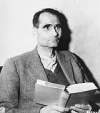
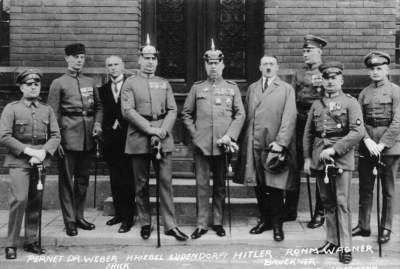
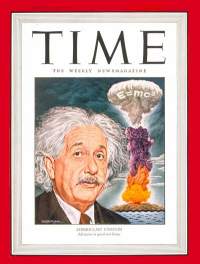
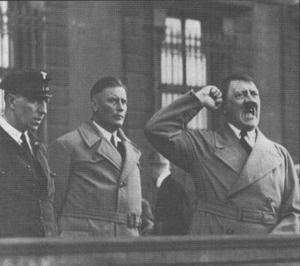
[See: Why Didn't Adolf Hitler Fire Hermann Goering?]
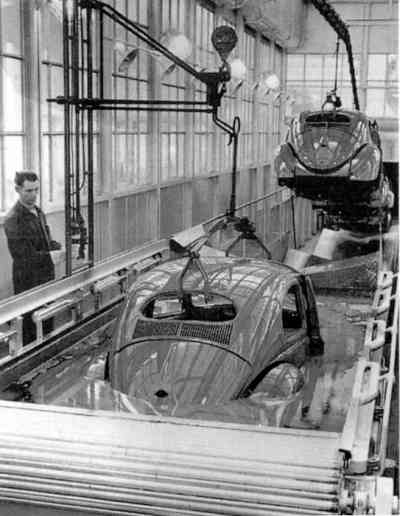

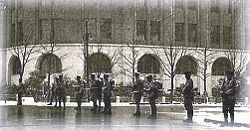


levi.bookin@gmail.com






